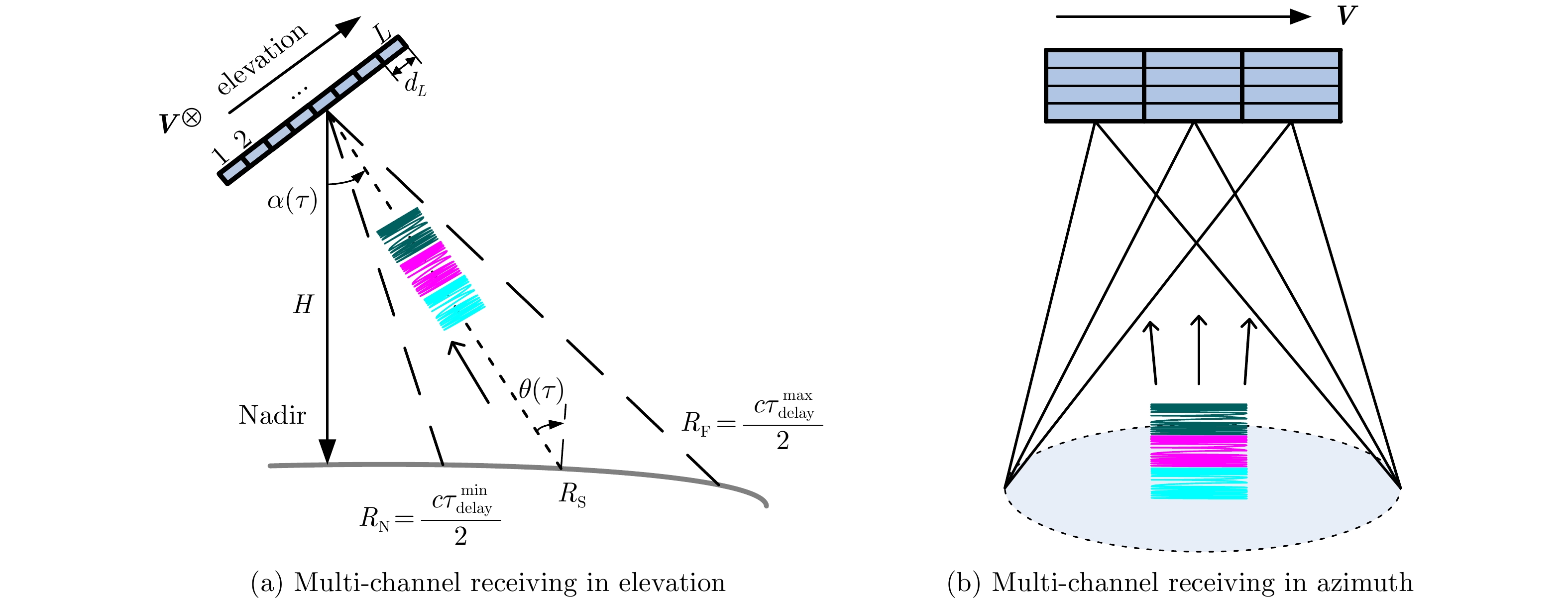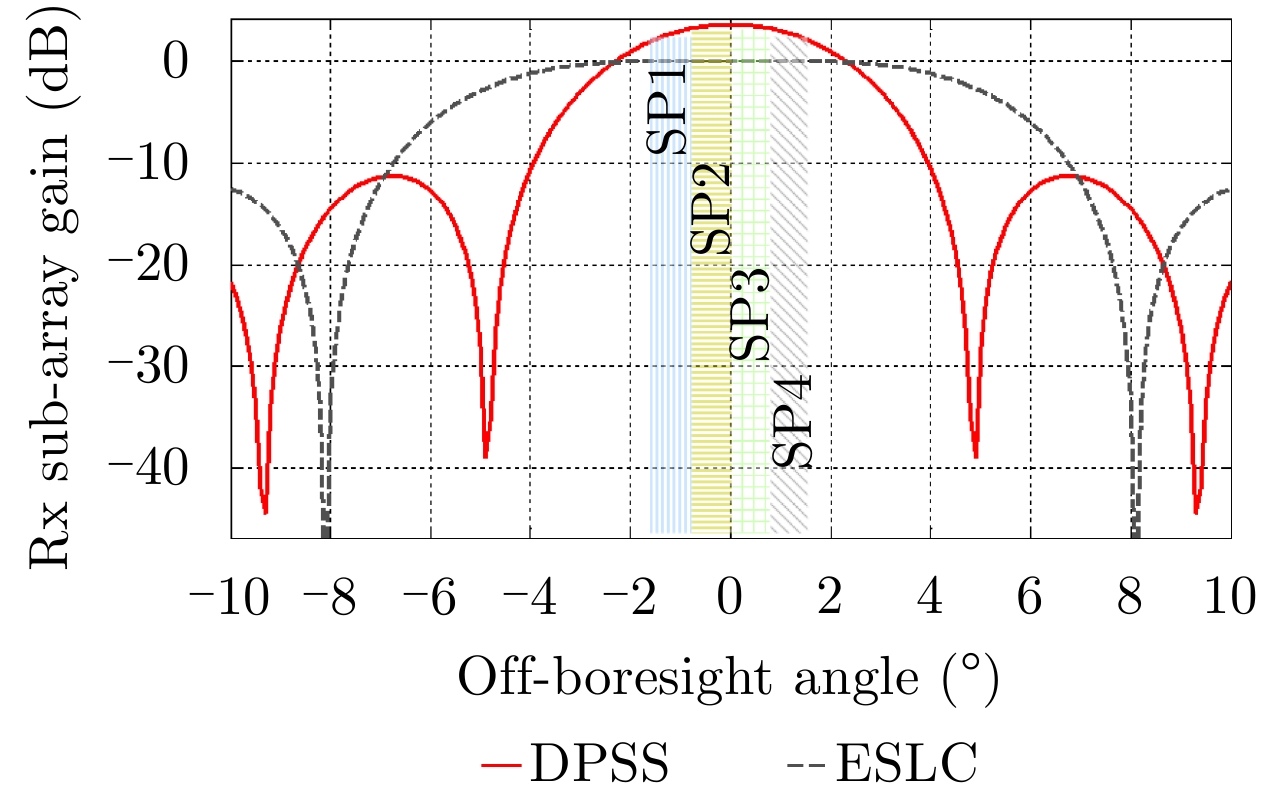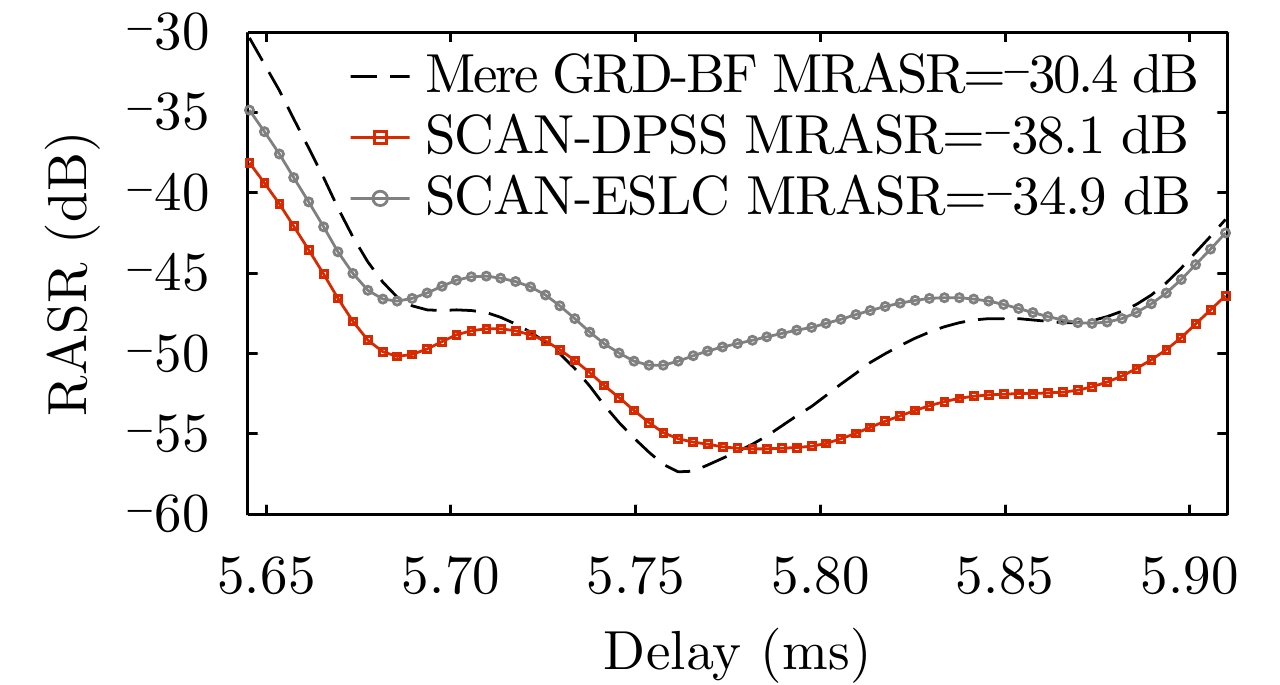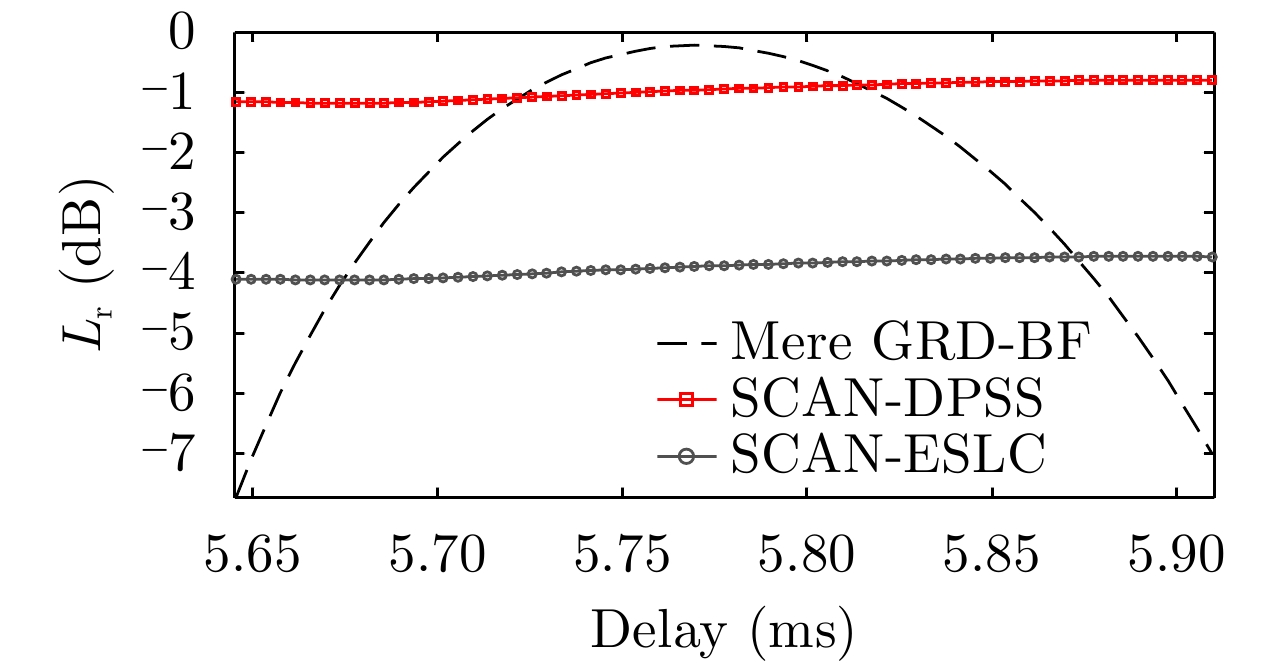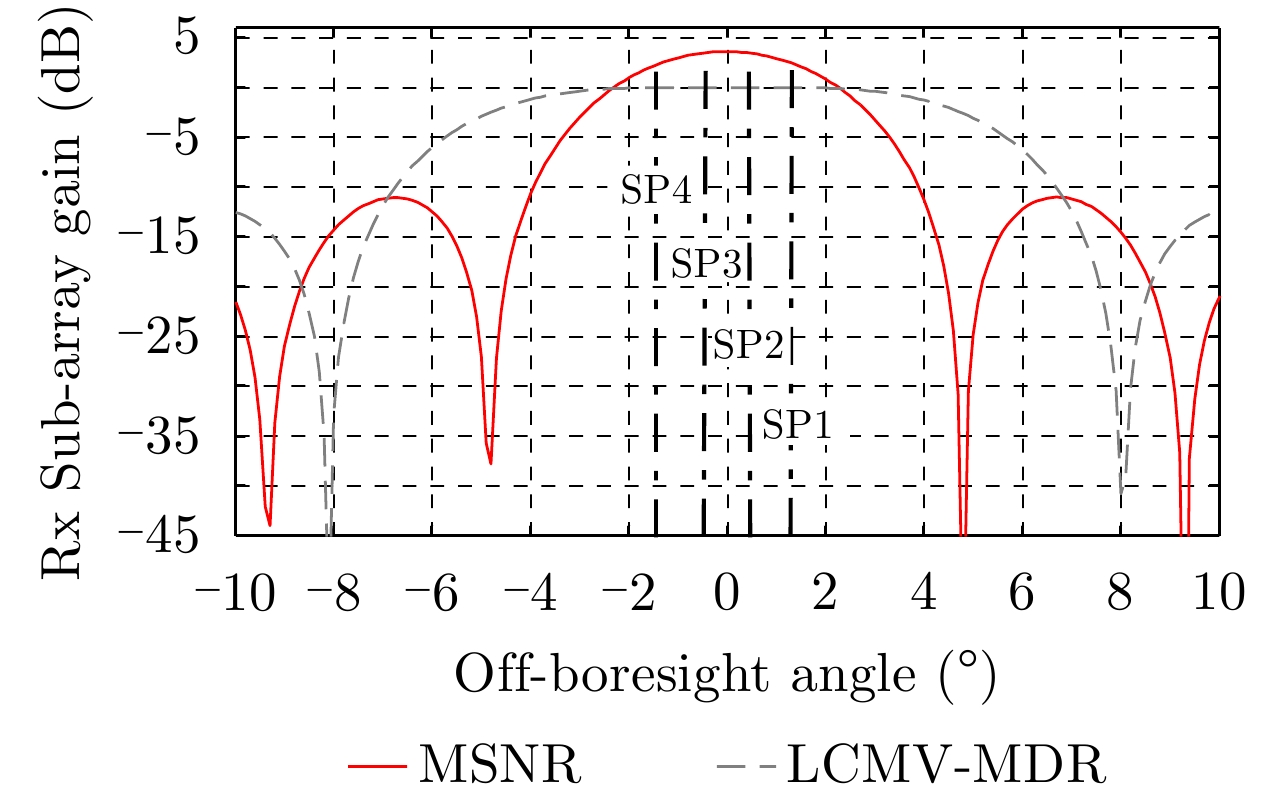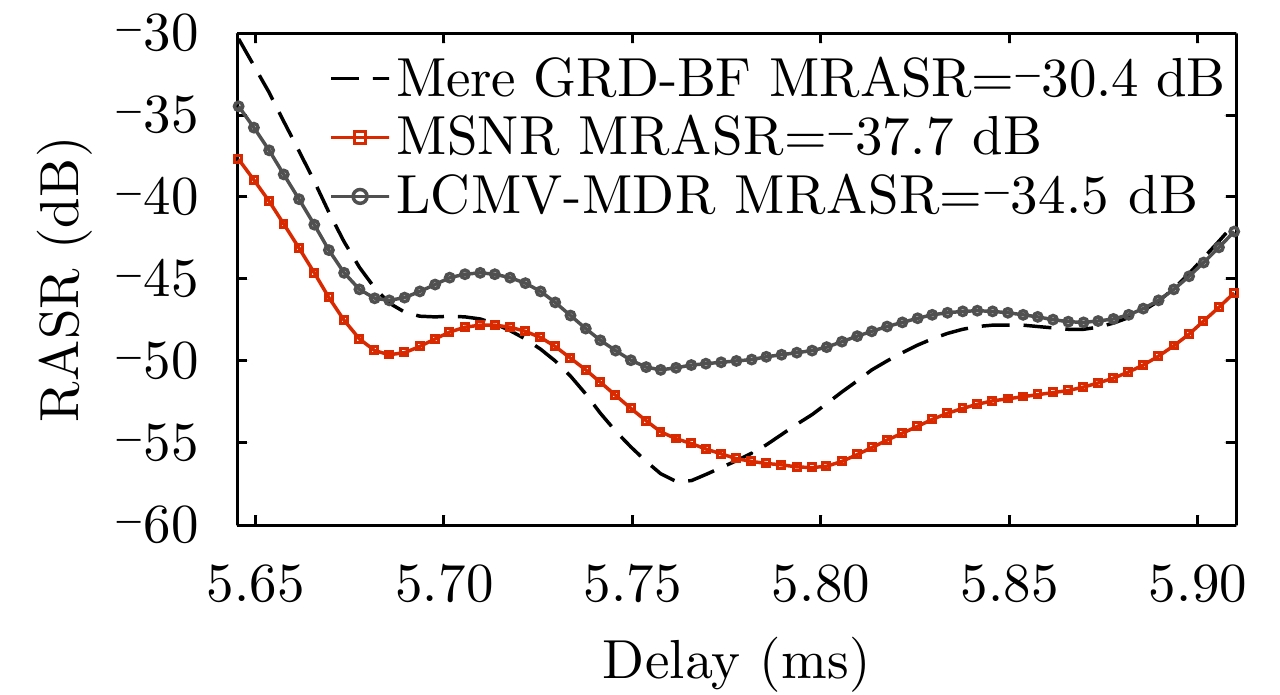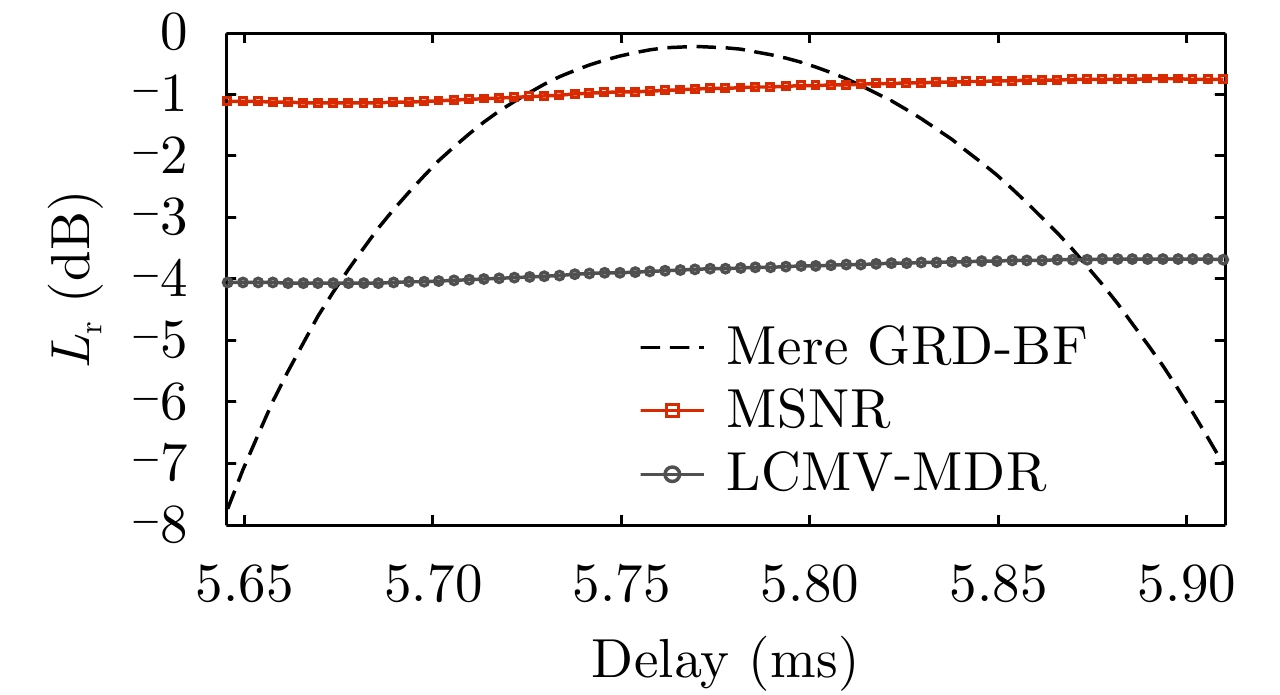| [1] |
MOREIRA A, PRATS-IRAOLA P, YOUNIS M, et al. A tutorial on synthetic aperture radar[J]. IEEE Geoscience and Remote Sensing Magazine, 2013, 1(1): 6–43. doi: 10.1109/MGRS.2013.2248301 |
| [2] |
KRIEGER G, GEBERT N, and MOREIRA A. Unambiguous SAR signal reconstruction from nonuniform displaced phase center sampling[J]. IEEE Geoscience and Remote Sensing Letters, 2004, 1(4): 260–264. doi: 10.1109/LGRS.2004.832700 |
| [3] |
GEBERT N, KRIEGER G, and MOREIRA A. Digital beamforming on receive: Techniques and optimization strategies for high-resolution wide-swath SAR imaging[J]. IEEE Transactions on Aerospace and Electronic Systems, 2009, 45(2): 564–592. doi: 10.1109/TAES.2009.5089542 |
| [4] |
KRIEGER G, GEBERT N, and MOREIRA A. Multidimensional waveform encoding: A new digital beamforming technique for synthetic aperture radar remote sensing[J]. IEEE Transactions on Geoscience and Remote Sensing, 2008, 46(1): 31–46. doi: 10.1109/TGRS.2007.905974 |
| [5] |
ZHAO Qingchao, ZHANG Yi, WANG Wei, et al. Echo separation for space-time waveform-encoding SAR with digital scalloped beamforming and adaptive multiple null-steering[J]. IEEE Geoscience and Remote Sensing Letters, 2020, in press. doi: 10.1109/LGRS.2020.2968811 |
| [6] |
FENG Fan, LI Shiqiang, YU Weidong, et al. Study on the processing scheme for space-time waveform encoding SAR system based on two-dimensional digital beamforming[J]. IEEE Transactions on Geoscience and Remote Sensing, 2012, 50(3): 910–932. doi: 10.1109/TGRS.2011.2162097 |
| [7] |
FENG Fan, LI Shiqiang, YU Weidong, et al. Echo separation in multidimensional waveform encoding SAR remote sensing using an advanced null-steering beamformer[J]. IEEE Transactions on Geoscience and Remote Sensing, 2012, 50(10): 4157–4172. doi: 10.1109/TGRS.2012.2187905 |
| [8] |
HE Feng, MA Xile, DONG Zhen, et al. Digital beamforming on receive in elevation for multidimensional waveform encoding SAR sensing[J]. IEEE Geoscience and Remote Sensing Letters, 2014, 11(12): 2173–2177. doi: 10.1109/LGRS.2014.2323267 |
| [9] |
XU Wei and DENG Yunkai. Waveform diversity extraction in Spaceborne MIMO-SAR system based on multidimensional waveform encoding[J]. Journal of University of Electronic Science and Technology of China, 2012, 41(1): 25–30. doi: 10.3969/j.issn.1001-0548.2012.01.005 |
| [10] |
HE Feng, DONG Zhen, and LIANG Diannong. A novel space-time coding Alamouti waveform scheme for MIMO-SAR[J]. IEEE Geoscience and Remote Sensing Letters, 2015, 12(2): 229–233. doi: 10.1109/LGRS.2014.2333232 |
| [11] |
KRIEGER G. MIMO-SAR: Opportunities and pitfalls[J]. IEEE Transactions on Geoscience and Remote Sensing, 2014, 52(5): 2628–2645. doi: 10.1109/TGRS.2013.2263934 |
| [12] |
YOUNIS M, KRIEGER G, and MOREIRA A. MIMO SAR techniques and trades[C]. 2013 IEEE European Radar Conference, Nuremberg, Germany, 2013: 141–144.
|
| [13] |
DIEBOLD A V, IMANI M F, and SMITH D R. Phaseless radar coincidence imaging with a MIMO SAR platform[J]. Remote Sensing, 2019, 11(5): 533. doi: 10.3390/rs11050533 |
| [14] |
HUANG Pingping and XU Wei. ASTC-MIMO-TOPS mode with digital beam-forming in elevation for high-resolution wide-swath imaging[J]. Remote Sensing, 2015, 7(3): 2952–2970. doi: 10.3390/rs70302952 |
| [15] |
KIM J, YOUNIS M, MOREIRA A, et al. Spaceborne MIMO synthetic aperture radar for multimodal operation[J]. IEEE Transactions on Geoscience and Remote Sensing, 2015, 53(5): 2453–2466. doi: 10.1109/TGRS.2014.2360148 |
| [16] |
WANG Wenqin. MIMO SAR imaging: Potential and challenges[J]. IEEE Aerospace and Electronic Systems Magazine, 2013, 28(8): 18–23. doi: 10.1109/MAES.2013.6575407 |
| [17] |
WANG Jie, LIANG Xingdong, DING Chibiao, et al. A novel scheme for ambiguous energy suppression in MIMO-SAR systems[J]. IEEE Geoscience and Remote Sensing Letters, 2015, 12(2): 344–348. doi: 10.1109/LGRS.2014.2340898 |
| [18] |
QI Weikong and YU Weidong. A novel operation mode for spaceborne polarimetric SAR[J]. Science China Information Sciences, 2011, 54(4): 884–897. doi: 10.1007/s11432-011-4183-1 |
| [19] |
YOUNIS M, HUBER S, PATYUCHENKO A, et al. Performance comparison of reflector- and planar-antenna based digital beam-forming SAR[J]. International Journal of Antennas and Propagation, 2009, 2009: 614931.
|
| [20] |
ZHAO Qingchao, ZHANG Yi, WANG Wei, et al. On the frequency dispersion in DBF SAR and digital scalloped beamforming[J]. IEEE Transactions on Geoscience and Remote Sensing, 2020, 58(5): 3619–3632. doi: 10.1109/TGRS.2019.2958863 |
| [21] |
YOUNIS M, ROMMEL T, BORDONI F, et al. On the pulse extension loss in digital beamforming SAR[J]. IEEE Geoscience and Remote Sensing Letters, 2015, 12(7): 1436–1440. doi: 10.1109/LGRS.2015.2406815 |
| [22] |
SUESS M and WIESBECK W. Side-looking synthetic aperture radar system[J]. European Patent EP, 2002, 1(241): 487.
|
| [23] |
BORDONI F, YOUNIS M, VARONA E M, et al. Performance investigation on scan-on-receive and adaptive digital beam-forming for high-resolution wide-swath synthetic aperture radar[C]. International ITG Workshop of Smart Antennas, Berlin, Germany, 2009: 114–121.
|
| [24] |
WANG Wei, WANG R, DENG Yunkai, et al. An improved processing scheme of digital beam-forming in elevation for reducing resource occupation[J]. IEEE Geoscience and Remote Sensing Letters, 2016, 13(3): 309–313.
|
| [25] |
OPPENHEIM A V, SCHAFER R W, and BUCK J R. Discrete-Time Signal Processing[M]. 2nd ed. Upper Saddle River: Prentice-Hall, 1999.
|
| [26] |
VAN TREES H L. Optimum Array Processing: Part IV of Detection, Estimation, and Modulation Theory[M]. New York, USA: Wiley-Interscience Press, 2002.
|
| [27] |
GUERCI J R. Theory and application of covariance matrix tapers for robust adaptive beamforming[J]. IEEE Transactions on Signal Processing, 1999, 47(4): 977–985. doi: 10.1109/78.752596 |
| [28] |
GOLUB G H and VAN LOAN C F. Matrix Computations[M]. 2nd ed. Baltimore: The Johns Hopkins University Press, 1989.
|




 Submit Manuscript
Submit Manuscript Peer Review
Peer Review Editor Work
Editor Work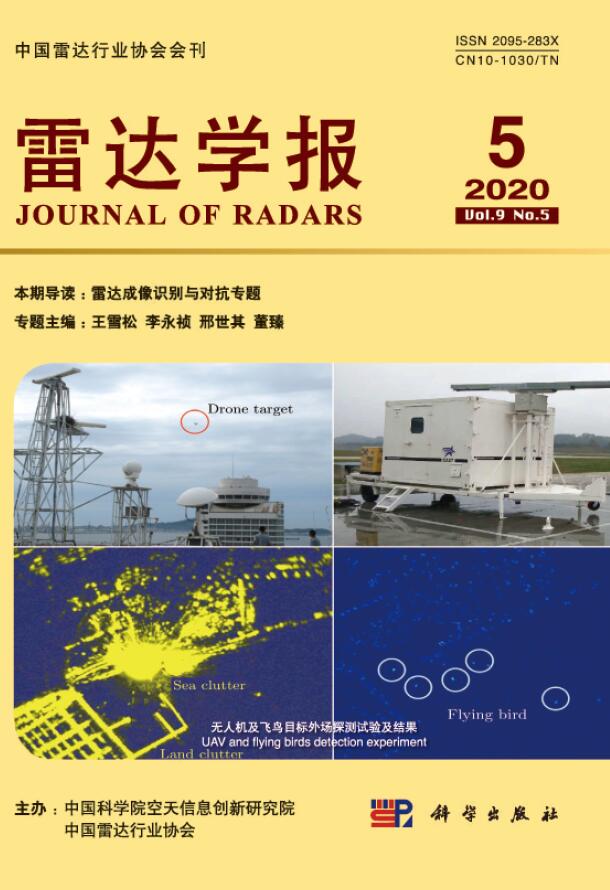





 DownLoad:
DownLoad:
